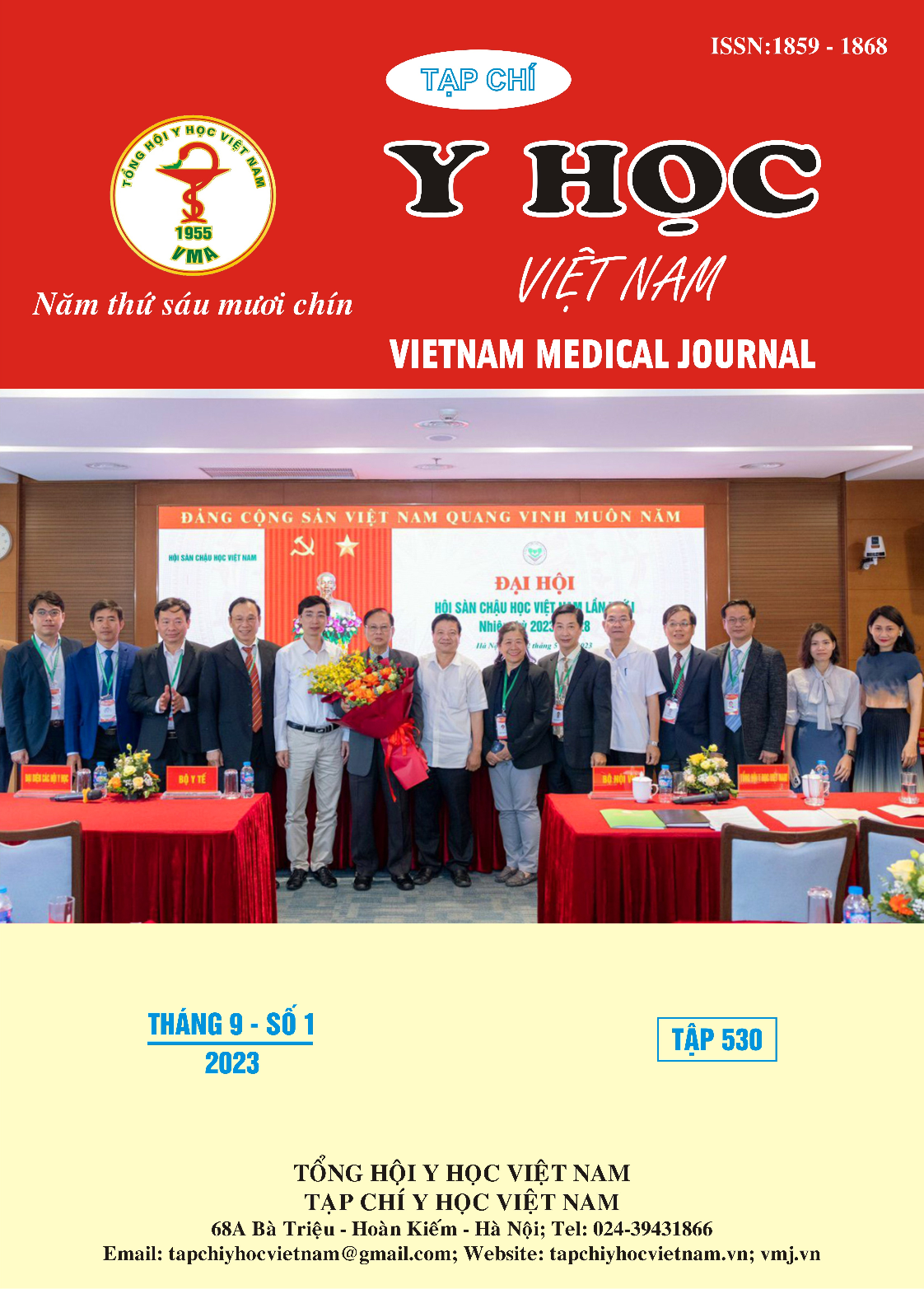EXPRESSION CHARACTERISTICS OF NK CELL RECEPTORS BEFORE AND AFTER EX VIVO EXPANSION IN PATIENTS WITH PROSTATE CANCER AND BENIGN PROSTATIC HYPERPLASIA
Main Article Content
Abstract
Objective: To evaluate the changes in the expression of NK cell activator (NKG2D) and inhibitory receptors (NKG2A) in patients with prostate cancer and benign prostatic hypertrophy (BPH) before and after proliferative culture. Subjects and methods: The study included a total of 20 patients aged between 60 and 70 years old, with 14 patients diagnosed with prostate cancer and 6 patients diagnosed with BPH. NK cell populations from both patient groups were collected through the isolation of mononuclear cells from 12 mL of peripheral blood and underwent purification using a magnetic column. The expression of NKG2A and NKG2D receptors on NK cells was assessed by flow cytometry at two time points: the day of culture initiation (D0) and day 14 after culture proliferation (D14). Results: There were no differences in the expression levels of NKG2A and NKG2D receptors between the prostate cancer and BPH groups at the time of D0. At D14, the prostate cancer group showed an increase in median fluorescence intensity signal of NKG2A and NKG2D receptors (MFI-NKG2A and MFI-NKG2D) by 1.92 and 2.37 times, respectively, compared to the pre-culture levels. Meanwhile, the BPH group demonstrated a growth coefficient of 2.25 for MFI-NKG2A and 3.8 for MFI-NKG2D, indicating that the increase in MFI-NKG2D was higher than that in the prostate cancer group (p = 0.006). Conclusion: The process of proliferative culture and activation enhances the expression of activator and inhibitory receptors in NK cells of both prostate cancer and BPH patient groups. However, there were no differences in the expression levels of these two receptors at the time of isolation from the body in both disease groups.
Article Details
Keywords
NK cell, NKG2D, NKG2A, expansion.
References
2. Lanier LL. NKG2D receptor and its ligands in host defense. Cancer Immunol Res (2015) 3:575–82. doi:10.1158/2326-6066.CIR-15-0098
3. Groh V, Wu J, Yee C, Spies T. Tumour-derived soluble MIC ligands impair expression of NKG2D and T-cell activation. Nature. (2002) 419:734–8. doi:10.1038/nature01112
4. Kazuhiro Nagai et al (2020). Highly Activated Ex Vivo-expanded Natural Killer Cells in Patients With Solid Tumors in a Phase I/IIa Clinical Study. ANTICANCER RESEARCH 40: 5687-5700.
5. Meckawy GR, Mohamed AM, Zaki WK, Khattab MA, Amin MM, ElDeeb MA, El-Najjar MR, Safwat NA. Natural killer NKG2A and NKG2D in patients with colorectal cancer. J Gastrointest Oncol. 2019 Apr;10(2):218-225. doi: 10.21037/jgo.2018.12.13. PMID: 31032088; PMCID: PMC6465484.
6. Bộ Y tế (2020), Hướng dẫn chẩn đoán và điều trị ung thư tiền liệt tuyến (Ban hành kèm theo Quyết định số 3130/QĐ-
7. Bộ Y tếngày 17 tháng 07 năm 2020).


